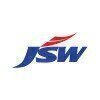Filter interviews by
Jindal Steel and Power QC Engineer Interview Questions and Answers
Jindal Steel and Power QC Engineer Interview Experiences
1 interview found
I applied via Naukri.com and was interviewed in Sep 2021. There was 1 interview round.
Interview Questionnaire
1 Question
- Q1. Experience questions in power plant
Interview Preparation Tips
Top trending discussions






Interview questions from similar companies

QA QC Engineer Interview Questions & Answers
ArcelorMittal Nippon Steelposted on 5 Feb 2025
(5 Questions)
- Q1. Mechanical testing
- Q2. Like Api audit , NABL audit , ISO and safety
- Q3. Quality manual,Quality objective, histogram,sop
- Q4. Standards and specification
- Q5. Internal audit,capa,moc,policy,
Interview Preparation Tips

(2 Questions)
- Q1. What information are you seeking regarding ductile iron pipes?
- Q2. What are the applications of ductile iron pipes, and what is the manufacturing process involved?

Graduate Engineer Trainee (Get) Interview Questions & Answers
Rashmi Metaliksposted on 15 Nov 2024
I applied via Campus Placement
(8 Questions)
- Q1. What is TTT DIAGRAM and its use
- Ans.
TTT diagram is a Time-Temperature-Transformation diagram used in materials science to understand the transformation of phases in a material.
TTT diagram shows the relationship between temperature, time, and phases in a material during cooling or heating.
It helps in predicting the microstructure and properties of a material based on its cooling rate.
TTT diagrams are commonly used in heat treatment processes for metals li...
- Q2. What is difference between ceramic and steel
- Ans.
Ceramic is a non-metallic material made from clay, while steel is a metallic material primarily made from iron and carbon.
Ceramic is non-metallic, while steel is metallic
Ceramic is made from clay, while steel is primarily made from iron and carbon
Ceramic is typically more brittle than steel
Steel is stronger and more durable than ceramic
Ceramic is often used for decorative purposes or in high-temperature applications, w...
- Q3. What is fatigue and what is creep in materials
- Ans.
Fatigue is the weakening of a material due to repeated loading, while creep is the gradual deformation of a material under constant stress.
Fatigue is the process of progressive and localized structural damage that occurs when a material is subjected to cyclic loading.
Creep is the time-dependent deformation of a material under constant load or stress.
Fatigue failure is often characterized by crack initiation and propaga...
- Q4. What are the different types of Steel making
- Ans.
Different types of steel making include basic oxygen furnace, electric arc furnace, and open hearth furnace.
Basic Oxygen Furnace (BOF) - uses oxygen to reduce the carbon content in the steel
Electric Arc Furnace (EAF) - uses electricity to melt scrap steel and produce new steel
Open Hearth Furnace - uses a fuel-air mixture to heat the steel and remove impurities
Other methods include Bessemer process, direct reduced iron,
- Q5. Why do we use alloying elements during Steel making and what are their applications
- Ans.
Alloying elements are used in steel making to improve properties like strength, hardness, corrosion resistance, and machinability.
Alloying elements are added to steel to enhance specific properties such as strength, hardness, toughness, and corrosion resistance.
Common alloying elements include chromium, nickel, manganese, molybdenum, and vanadium.
Chromium is added to improve corrosion resistance, nickel for toughness, ...
- Q6. What is SN curve ?
- Ans.
SN curve is a graphical representation of the relationship between stress and fatigue life of a material.
SN curve shows the number of cycles to failure (N) against the applied stress (S).
It helps in determining the fatigue life of a material under different stress levels.
Materials with higher fatigue strength have a steeper slope on the SN curve.
SN curves are commonly used in engineering to predict the durability of ma
- Q7. What is the composition of pigiron
- Ans.
Pig iron is an intermediate product of the iron industry, made by smelting iron ore in a blast furnace.
Pig iron is typically around 92-94% iron, with varying amounts of carbon, silicon, manganese, sulfur, and phosphorus.
It is brittle and not suitable for use in its raw form, but can be further processed into wrought iron or steel.
The carbon content of pig iron gives it a high carbon equivalent, making it ideal for cast...
- Q8. What is lever rule?
- Ans.
Lever rule is a principle used in material science to determine the relative amounts of two phases in a two-phase system.
Lever rule is used to calculate the fraction of each phase in a two-phase system based on the weight or volume percentages of the phases.
It is commonly used in metallurgy, ceramics, and other material science fields.
The lever rule equation is: L = (C - A) / (B - A), where L is the fraction of one pha...
Interview Preparation Tips
- Steel making
- Iron making
- Physical metallurgy

Graduate Engineer Trainee (Get) Interview Questions & Answers
Jindal Stainlessposted on 27 Nov 2024
I applied via Campus Placement and was interviewed in Oct 2024. There were 3 interview rounds.
Aptitude and Core Related ( Mine was metallurgy )
10 students in a group, 30 minutes duration, unstructured, topic was " pros and cons of WFH"
(2 Questions)
- Q1. HR QUES -- INTRODUCE YOURSELF, YOUR DREAMS/GOALS, YOUR FAMILY, SPECIAL THING ABOUT YOUR HOMETOWN, INTERESTING KEYPOINTS FROM RESUME, SOCIETIES AND POSITION OF RESPONSIBILITIES.
- Q2. TECH QUESTIONS -- TYPES OF DISLOCATIONS, FE-C DIAGRAM, ELLINGHAM DIAGRAM, GIBBS FREE ENERGY, LATENT HEAT, DIFFERENT CRYSTAL STRUCTURES, SLIP PLANES, STEEL MAKING (AOD PROCESS), LE - CHATLIER'S PRINCIPLE, H...
Interview Preparation Tips
- Physical metallurgy
- Steel Making
- Heat Treatment
- Thermodynamics
--SHOW GENUINE INTEREST IN JOINING THE ORGANISATION, DON'T MENTION HIGHER STUDY PLANS EVEN IF YOU HAVE ONE.
--LOOK INTO THE EYES AND TALK.

(3 Questions)
- Q1. Draw Shear force and bending moment diagram of a fixed beam.
- Ans.
Shear force and bending moment diagrams show internal forces and moments in a fixed beam.
Shear force diagram shows the variation of shear force along the length of the beam.
Bending moment diagram shows the variation of bending moment along the length of the beam.
At supports of a fixed beam, shear force is maximum and bending moment is zero.
At midspan of a fixed beam, bending moment is maximum and shear force is zero.
- Q2. What is the position of reinforcement of a cantilever beam.
- Ans.
Reinforcement of a cantilever beam is positioned at the bottom to resist tension forces.
Reinforcement is placed at the bottom of the cantilever beam to resist tension forces.
The reinforcement helps in preventing the beam from bending or breaking under load.
Examples of reinforcement materials include steel bars or mesh.
Proper positioning and sizing of reinforcement is crucial for the structural integrity of the beam.
- Q3. In railway crossing, which type of sleeper is used.
- Ans.
Concrete sleepers are used in railway crossings.
Concrete sleepers are preferred over wooden sleepers in railway crossings due to their durability and strength.
Concrete sleepers help in maintaining the stability and alignment of the tracks at railway crossings.
Examples of concrete sleepers used in railway crossings include monoblock sleepers and twin block sleepers.

Discussed at infrastructure
(3 Questions)
- Q1. Technical field related questions
- Q2. HR related questions.
- Q3. AI related questions
(1 Question)
- Q1. HR related questions

I applied via Walk-in and was interviewed in Nov 2024. There was 1 interview round.
(2 Questions)
- Q1. How to know if Hydraulic cylinder leakage
- Ans.
Check for hydraulic cylinder leakage by inspecting for oil puddles, decreased performance, and abnormal noises.
Inspect the area around the hydraulic cylinder for oil puddles or stains
Monitor the performance of the hydraulic system for any decrease in efficiency
Listen for any abnormal noises coming from the hydraulic cylinder during operation
- Q2. What is NAS
- Ans.
NAS stands for Network Attached Storage, which is a type of storage device that connects to a network to provide shared storage space.
NAS devices are typically used for storing and sharing files, data backups, and media streaming within a network.
NAS devices can be accessed by multiple users and devices simultaneously over a network.
NAS devices often have their own operating system and can run various applications such...
Interview Preparation Tips

I applied via Naukri.com and was interviewed in Jun 2024. There was 1 interview round.
(2 Questions)
- Q1. Process of production
- Q2. Final production process
Interview Preparation Tips
- Hot Forging
- Technical Support
- Testing Tools
- Production Planning
- ERP

(6 Questions)
- Q1. What is the use of lubricant in roling mill
- Ans.
Lubricant in rolling mills reduces friction between metal surfaces, prevents wear and tear, and improves efficiency.
Lubricant reduces friction between metal surfaces in rolling mills
Prevents wear and tear on machinery
Improves efficiency by reducing energy consumption
Helps in cooling the metal during the rolling process
Examples: oil-based lubricants, grease, graphite-based lubricants
- Q2. What are the major cause of roll broken
- Ans.
The major causes of roll breakage in maintenance engineering include material defects, improper setup, excessive tension, and foreign objects.
Material defects such as weak spots or impurities can weaken the roll and lead to breakage.
Improper setup or alignment of the roll can cause uneven stress distribution and eventual breakage.
Excessive tension on the roll can exceed its load-bearing capacity and cause it to break.
F...
- Q3. What is cause of rolling mill bearing broken
- Ans.
The main causes of rolling mill bearing breakage are lack of lubrication, contamination, overloading, and misalignment.
Lack of lubrication can lead to increased friction and heat generation, causing the bearing to fail prematurely.
Contamination from dirt, debris, or water can accelerate wear and tear on the bearing surfaces.
Overloading the bearing beyond its capacity can cause excessive stress and lead to failure.
Misal...
- Q4. Compressor overhead cause
- Ans.
Compressor overhead cause can be due to various factors such as high discharge pressure, low suction pressure, dirty filters, or worn out components.
High discharge pressure can lead to overheating of the compressor.
Low suction pressure can cause the compressor to work harder and overheat.
Dirty filters can restrict airflow and cause the compressor to overheat.
Worn out components such as valves or seals can lead to ineff
- Q5. How to measure wire rope condition
- Ans.
Wire rope condition can be measured by visual inspection, non-destructive testing, and load testing.
Visual inspection for signs of wear, corrosion, broken wires, and distortion
Non-destructive testing methods like magnetic particle inspection, ultrasonic testing, and dye penetrant testing
Load testing to assess the strength and integrity of the wire rope under working conditions
- Q6. Lubricant chemicals property
Interview Preparation Tips
Tell us how to improve this page.
Jindal Steel and Power Interviews By Designations
- Jindal Steel and Power Junior Engineer Interview Questions
- Jindal Steel and Power Assistant Manager Interview Questions
- Jindal Steel and Power Graduate Engineer Trainee (Get) Interview Questions
- Jindal Steel and Power Deputy Manager Interview Questions
- Jindal Steel and Power Electrical Engineer Interview Questions
- Jindal Steel and Power Electrician Interview Questions
- Jindal Steel and Power Mechanical Engineer Interview Questions
- Jindal Steel and Power Production Engineer Interview Questions
- Show more
Interview Questions for Popular Designations
- QA QC Engineer Interview Questions
- Quality Engineer Interview Questions
- Senior Quality Engineer Interview Questions
- Senior QA QC Engineer Interview Questions
- Graduate Engineer Trainee (Get) Interview Questions
- Production Engineer Interview Questions
- Electrical Engineer Interview Questions
- Junior Engineer Interview Questions
- Show more
Interview Questions from Similar Companies
Fast track your campus placements
|
Assistant Manager
2.2k
salaries
| ₹4 L/yr - ₹13.2 L/yr |
|
Deputy Manager
964
salaries
| ₹5.7 L/yr - ₹18 L/yr |
|
Junior Engineer
935
salaries
| ₹1.8 L/yr - ₹5.6 L/yr |
|
Assistant Engineer
758
salaries
| ₹2.6 L/yr - ₹8.1 L/yr |
|
Manager
647
salaries
| ₹8.5 L/yr - ₹24.2 L/yr |

Tata Steel

JSW Steel

Steel Authority Of India

Vedanta Limited
- Home >
- Interviews >
- Jindal Steel and Power Interview Questions >
- Jindal Steel and Power QC Engineer Interview Questions















